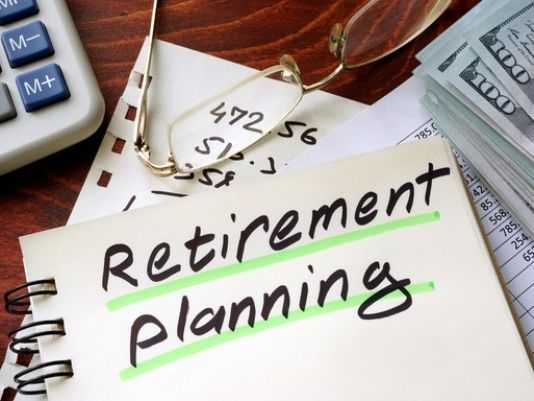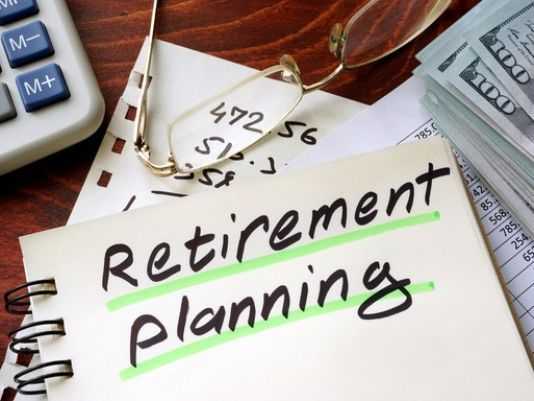Consider Saving For Retirement With A Self-employed 401(k)
Consider saving for retirement with a self-employed 401(k)
Consider saving for retirement with a self-employed 401(k)
If you’re self employed and you’ve got designs on saving for retirement, you’ve got plenty of options.
According to the Labor Department, you could save for retirement using any of the following retirement plans: a payroll deduction individual retirement arrangement (IRA), a SEP-IRA, SIMPLE-IRA, a self-employed or solo 401(k), a profit-sharing plan, or a defined benefit plan.
And increasingly, experts suggest that you consider using a self-employed 401(k). Why so?
You can save more
For one, you get to sock away more for retirement with a solo 401(k) than with a SEP-IRA or profit-sharing plan. Consider this example from John Kilroy, managing member at iValue Financial Planning: Let's say you have a business owner who has the option of adopting either a SEP-IRA or a self-employed 401(k) and who wishes to reach the maximum contribution amount for 2017. The self-employed 401(k) will allow a contribution of $54,000 for 2017 if the net income of the business is at least $190,437. A $54,000 contribution can only be made to a SEP-IRA if the net income of the business is at least $281,659.
In addition, a business owner age 50 or older could contribute up to another $6,000 into the self-employed 401(k) as a catch-up contribution for 2017, Kilroy says. This option is not available in a SEP-IRA.
The 'do' list
As good as saving more for retirement might sound, experts also caution that the self-employed must weigh carefully the pros and cons of a solo 401(k). For his part, Brian Vnak, a vice president of integrated advice with Wealth Enhancement Group, says the self employed should understand what, if any, custodial restrictions there might be. Some custodians, for instance, offer a bare-bones solo 401(k) similar to what the firms might offer with its IRAs while others offer “the whole kitchen sink,” a robust 401(k).
Some custodians will also allow you to rollover over other retirement accounts you might have — a SEP-IRA for instance — into your self-employed 401(k) while others may restrict the account types that they accept. “So, don’t get stuck processing a rollover without a place to put it,” Vnak says.
In addition, some custodians allow loans, and some don’t.
Vnak also advises the self-employed to investigate whether the custodian offers a self-employed Roth 401(k). “This can be used to aggregate Roth IRA rollovers if allowed to achieve consolidation objective,” he says.
The self-employed should also take the time to understand the administrative requirements and reporting of having a self-employed 401(k), and evaluate if they want to take on the reporting responsibilities or hire a third-party administrator, says Vnak.
For instance, self-employed 401(k) plan owners must Form 5500-EZ with the IRS after plan assets exceed $250,000, says Mary Kay Foss, director at Sweeney Kovar. “The 5500-EZ can be a pain,” she says. And that, she says, “is one reason to put off rolling other retirement money into a self-employed 401(k).”
It’s also necessary to file Form 5500 if you acquire an employee or terminate the plan, Foss says.
The 'don't' list
Owners of self-employed 401(k) plan must take a required minimum distribution or RMD after age 70½. A worker with an employer-sponsored 401(k) who owns less than 5% of the company doesn’t have to take an RMD. “But when you have a self-employed 401(k) you are a 100% owner and have an RMD requirement,” Vnak says.
Likewise, owners of a self-employed Roth 401(k) plan must take RMDs too. “While Roth IRAs do not have an RMD, Roth 401ks do,” says Vnak, who suggests that owners of self-employed Roth 401(k) ought to consider rolling their money out of the plan into a Roth IRA before turning 70½.
Don’t expect to use a qualified charitable distribution or QCD if you have a self-employed 401(k). “This provision for individuals age 70 ½ and older, up to $100,000 annually, is only possible via IRAs, not 401(k)s, Vnak says.
Don’t forget to keep your IRA accounts open. “While the self-employed 401(k) may be primary receptacle for aggregating accounts, an individual will likely want to retain having traditional IRA and/or Roth IRA accounts which are subject to their own contribution limits, both for deductible and after-tax contributions,” Vnak says.
Source:- https://www.usatoday.com/story/money/personalfinance/retirement/2017/10/06/gig-worker-consider-saving-retirement-self-employed-401-k/698818001/
Source:- https://www.usatoday.com/story/money/personalfinance/retirement/2017/10/06/gig-worker-consider-saving-retirement-self-employed-401-k/698818001/
Tagged as
You May Also Like
3 Unexpected Retirement Costs Tha..
Must-have Tools And Tips For Year..
Retirement Dream -- More Money Fo..
What You Don't Know About Social ..
The Profits Made From Flipping Ho..
This Is The Maximum Social Securi..
Must-have Tools And Tips For Year..
Ask A Fool: IRA Vs. 401(k), Which..
Share the joy
Recent News
Retirement dream -- more money for travel, less for health care -- tough to achieve
What you don't know about Social Security in 2018
Must-have tools and tips for year-end retirement planning
3 unexpected retirement costs that can shake up your finances
This is the maximum Social Security retirement benefit payable in 2018
Ask a Fool: IRA vs. 401(k), which is the better choice
Recent Articles
Searching For The Option Of Private College Loans, Find The Best Student Loan, Best Student Loan C..
Refinance Student Loans, Best Private Student Loan Options, Best Student Loan Companies, Choose Th..
Parent Plus Loans And Its Wonderful Advantages, Choose The Best Student Loans, Best Student Loan C..
Online College Vs. Traditional Degrees, Student Loan Consolidation, Best Private Student Loan Opti..
Knowing Everything About The Federal Consolidation Loan, Graduate Student Loans, Graduate And Prof..
How To Find Low-Interest Student Loans, Low-interest Student Loans, Find The Best Student Loan, Be..





 Home
Home
















